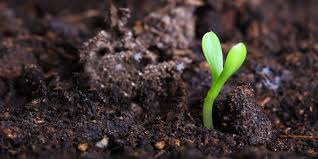Source: alternet.org
Published: March 9, 2017

Written by Alexis Baden-Mayer
There are three interrelated challenges facing agriculture over the next 50 years.
The first is soil loss.
In the United States, soil is swept and washed away 10 times faster than it is replenished. That costs $37.6 billion every year. Globally, all of the world’s topsoil could be gone within 60 years.
The second challenge is diet-related disease.
About half of all American adults have one or more preventable chronic diseases related to diet. Diet is now the number-one risk factor for disease. More than two-thirds of adults and nearly one-third of children are overweight or obese. This costs $190 billion a year. Obesity is the new malnutrition. Globally, a growing number of people have plenty to eat and yet remain malnourished.
The third challenge is climate change.
Floods, droughts, wildfires and extreme or unseasonable temperatures cause crop and livestock losses. In 2011, exposure to high temperature events caused over $1 billion in losses to U.S. agricultural producers.
Phasing out greenhouse gas emissions is important, but it won’t reverse climate change. Until we remove enough CO2 from the atmosphere to get back down below the dangerous tipping point of 350 ppm, the impacts of climate change will persist.
Luckily, there’s an inexpensive and easy-to-use technology for reliable carbon dioxide removal and sequestration. Soil.
Agricultural activities have removed roughly 660 GtCO2 from terrestrial ecosystems. The good news is we can put it back.
Shifting to agricultural practices that can draw that carbon back down to the soil would:
- Reduce atmospheric CO2 by 40-70 ppm by 2100,
- Build soil instead of losing it, and
- Improve resilience to drought and floods, while
- Producing more food that’s more nutritious, and
- Generating higher farm incomes from increased production of nutrient-dense food.
We need more research on the microbial communities in the soil that generate carbon storage. Plants give the carbon they get from photosynthesis to soil microorganisms in exchange for water and nutrients. It works best when there are lots of different plants exchanging lots of different nutrients with lots of different microbes. The greater the plant biodiversity, the more carbon gets stored. The best way to reverse soil loss and sequester carbon is to continuously cover soil with a diverse array of living plants.
Scientists are currently documenting microbial soil carbon sequestration using carbon-13 isotope pulse labeling. Using this method, they can track the carbon flows from plants to and through soil microorganisms and identify the plants and the microorganisms that store the most carbon.
Fence line comparisons have demonstrated greater resilience to droughts and floods in carbon rich soils. Now, scientists can measure water flows through soil in three dimensions and accurately document soils’ water infiltration and holding capacity.
Grazing and pasture-raised animals can be managed to increase plant biodiversity and microbial activity. Well-managed pastures can sequester even more soil carbon than cropping systems. But we need a deeper understanding of how methanotrophs in the soil utilize methane emitted from grazing animals.
Finally we need an assessment of the socio-economic impediments to, and opportunities for, realizing the full potential for soil carbon sequestration.
If increasing soil carbon can help produce more food than you ever thought possible on less land than you can imagine, as John Jeavons would say, then why don’t more farmers do it?
If increasing soil carbon produces food that is flavorful, aromatic, and so healthy and nutritious that it could cost-effectively reverse diet-related diseases, why aren’t more consumers demanding it?
The above text was given as testimony by Alexis Baden-Mayer, political director at the Organic Consumers Association, at the Visioning of U.S. Agriculture Systems for Sustainable Production Listening Session held by the USDA on March 2, 2017.
